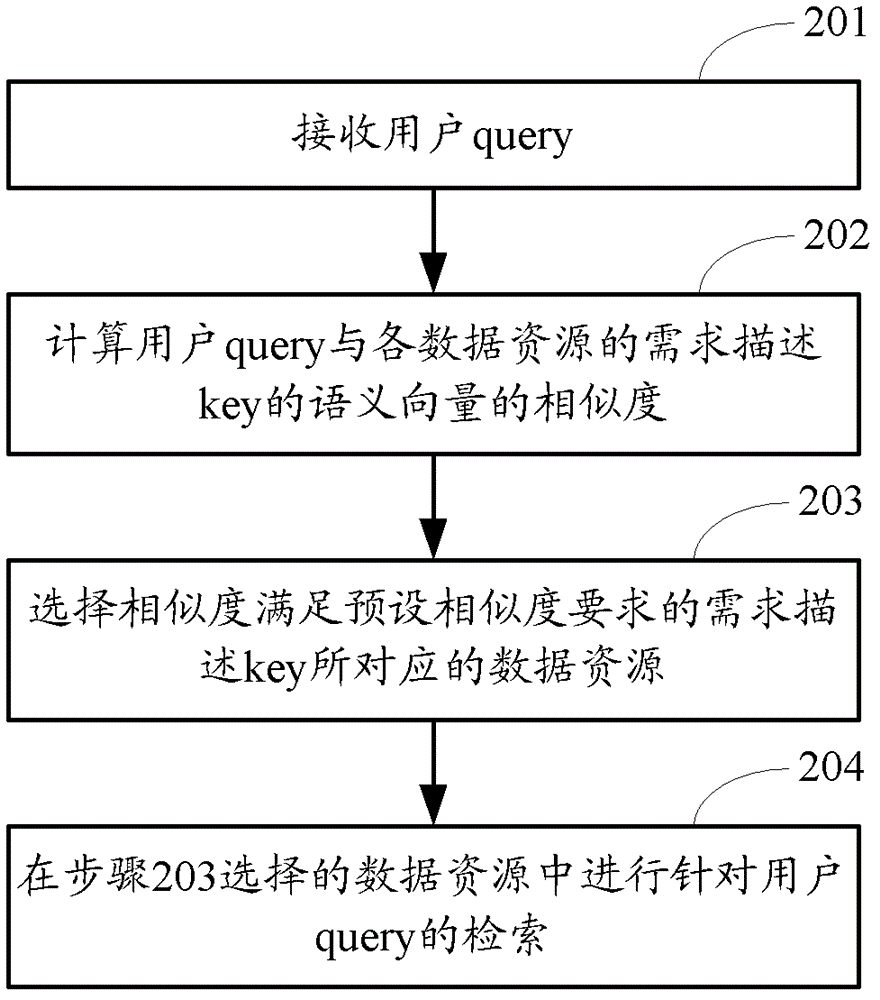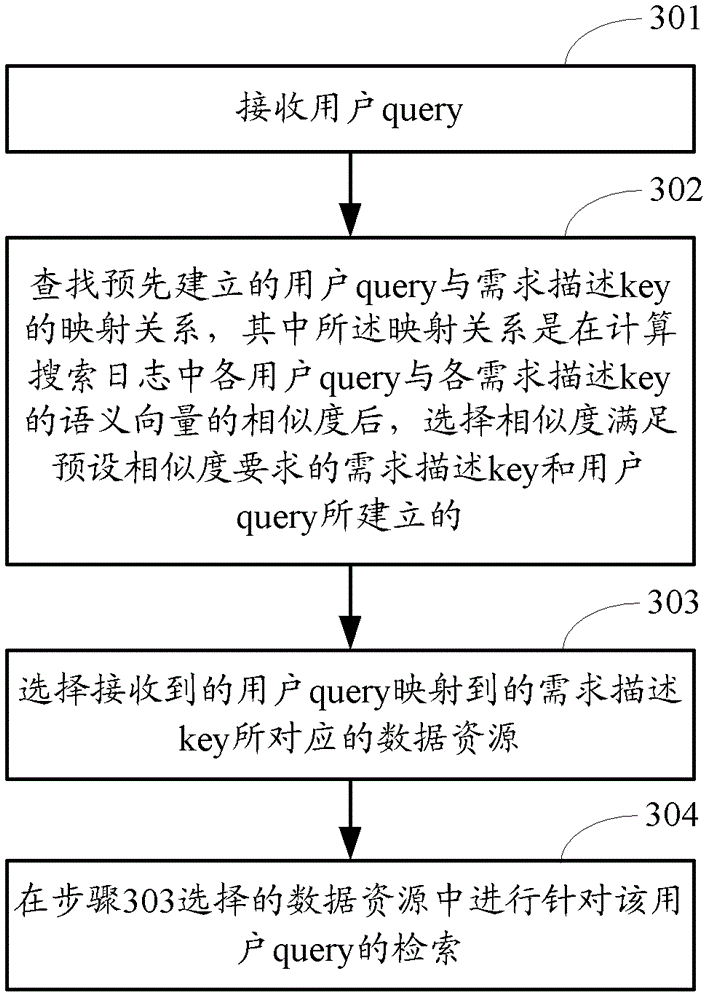A demand-based data retrieval method and device
A demand and demand description technology, applied in the field of demand-based data retrieval methods and devices, can solve problems such as inability to map, waste of resources, and inability to recall search results, and achieve the effect of avoiding multiple retrievals and saving retrieval resources.
- Summary
- Abstract
- Description
- Claims
- Application Information
AI Technical Summary
Problems solved by technology
Method used
Image
Examples
Embodiment 1
[0073] When establishing the semantic vector of the requirement description key corresponding to each data resource, the requirement description key needs to be preprocessed first. The preprocessing may include at least one of the following processes: converting into a preset uppercase or lowercase form, and converting into a preset encoding form.
[0074] The purpose of preprocessing the requirement description key is to make the user query and the semantic vector of the requirement description key consistent in form, so as to facilitate subsequent calculation of the similarity between the user query and the semantic vector of the requirement description key. It can be pre-agreed that both the user query and the requirement description key should be in uppercase or lowercase, or that the user query and the requirement description key should be in a unified encoding format, for example, the international extension code of Chinese characters (GBK).
[0075] The semantic vector ...
Embodiment 2
[0089] figure 2 The flow chart of the method for selecting data resources provided by Embodiment 2 of the present invention, such as figure 2 As shown, the method may include the following steps:
[0090] Step 201: Receive user query.
[0091] The user query is the query input by the user received by the search engine.
[0092] Step 202: Calculate the similarity between the user query and the semantic vector of the requirement description key of each data resource.
[0093] In this step, when calculating the similarity, the following steps S1 and S2 can be performed for the semantic vectors of each requirement description key:
[0094] S1: Match the user query with the semantic vector of the demand description key, determine the contents hit by the user query in the semantic vector, and then calculate the ratio of the hit length of the user query to the length of the user query in each hit content ; and / or, calculate the similarity between the semantic vector of the user...
Embodiment 3
[0115] image 3 The flow chart of the method for selecting data resources provided by Embodiment 3 of the present invention, such as image 3 As shown, the method may include the following steps:
[0116] Step 301: Receive user query.
[0117] The user query is the query input by the user received by the search engine.
[0118] Step 302: Find the pre-established mapping relationship between user query and demand description key, wherein the mapping relationship is after calculating the similarity between each user query and the semantic vector of each demand description key in the search log, select the similarity to meet the preset The requirement description of the similarity requirement is established by the key and user query.
[0119] In this embodiment, the mapping relationship between the user query and the requirement description key is pre-established. After receiving the user query, the mapping relationship is directly searched to determine the requirement descrip...
PUM
 Login to View More
Login to View More Abstract
Description
Claims
Application Information
 Login to View More
Login to View More - R&D
- Intellectual Property
- Life Sciences
- Materials
- Tech Scout
- Unparalleled Data Quality
- Higher Quality Content
- 60% Fewer Hallucinations
Browse by: Latest US Patents, China's latest patents, Technical Efficacy Thesaurus, Application Domain, Technology Topic, Popular Technical Reports.
© 2025 PatSnap. All rights reserved.Legal|Privacy policy|Modern Slavery Act Transparency Statement|Sitemap|About US| Contact US: help@patsnap.com



